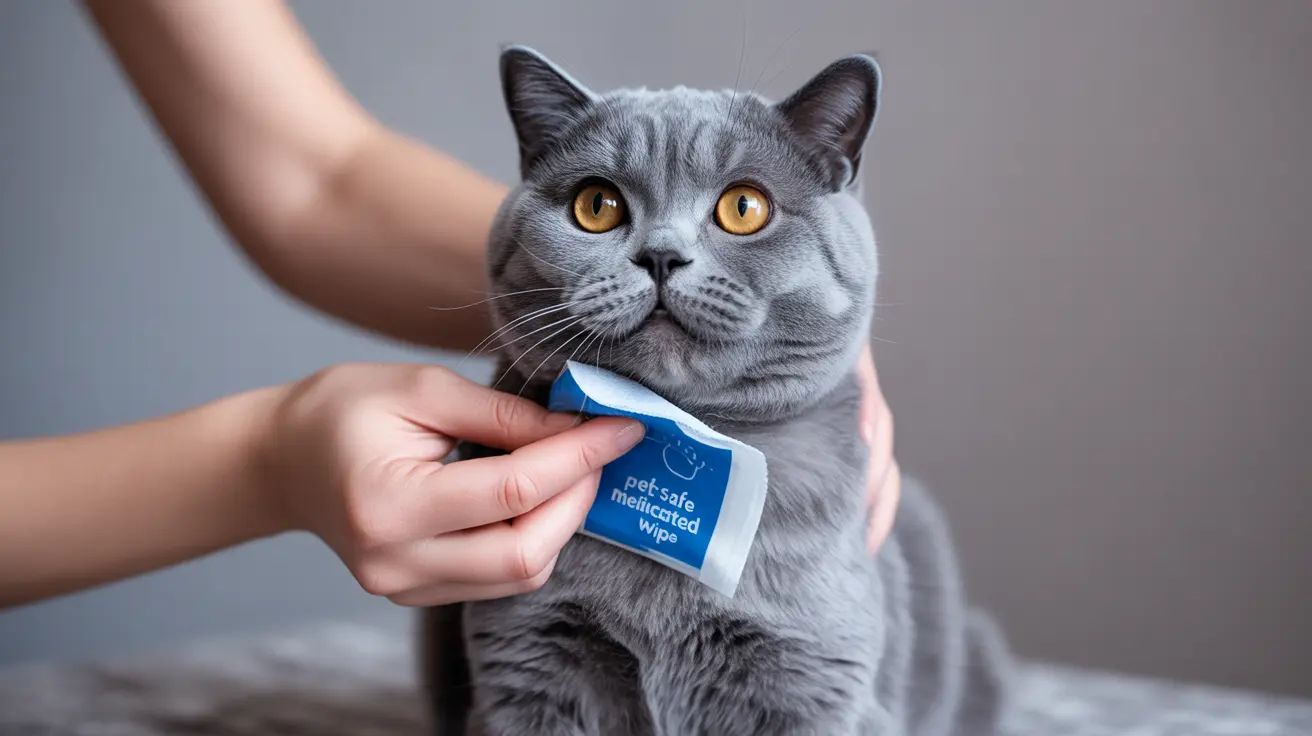Introduction
Cat acne, a common yet often overlooked skin condition in felines, affects cats of all breeds, ages, and genders. This dermatological issue primarily manifests as black spots or small red bumps on a cat's chin and lips, causing varying degrees of discomfort for our feline friends. Understanding this condition is crucial for early detection and proper treatment.
When hair follicles, particularly those on the chin, produce excessive amounts of keratin, this protein becomes trapped and leads to clogged pores. The result is the formation of blackheads (comedones) or pustules, which can range from mild occasional spots to more severe cases where follicles may fuse together, creating painful, crusted lesions.
While cat acne is generally not a severe medical condition, early recognition and proper management are essential for maintaining your cat's comfort and preventing potential complications. This comprehensive guide will help you understand, identify, and effectively treat feline acne.
Understanding the Root Causes of Feline Acne
The primary trigger for cat acne is an overproduction of keratin. However, there are several contributing factors that can worsen or initiate the condition, making it important for pet parents to be aware of the full range of potential causes:
- Excessive sebum production in chin glands: Sebaceous glands can become overactive, leading to greasy skin that traps dirt and bacteria.
- Poor grooming habits: Some cats, especially older or long-haired breeds, may not clean their chins effectively, allowing debris to accumulate.
- Compromised skin barrier function: If the skin's natural defenses are weakened, it is more vulnerable to acne and other infections.
- Bacterial infections in clogged pores: Once pores are blocked, bacteria can multiply, making acne worse or causing secondary infection.
- Environmental irritants and allergies: Certain irritants, like harsh cleaning chemicals, dust, or materials in food bowls, can trigger or exacerbate acne.
- Stress-related factors: Stressed cats may display changes in grooming behavior or skin health, increasing the risk of acne formation.
Identifying Cat Acne Symptoms
Early detection of cat acne is key to effective management. Pet owners should be vigilant for the following signs, which often appear on the chin or lower lip:
- Black spots on the chin area: These resemble pepper flakes or small blackheads.
- Small red bumps or pustules: Raised, sometimes pus-filled lesions may develop alongside blackheads.
- Crusted or scabbed areas: Opened or aggravated lesions may form scabs or crusts over the affected skin.
- Hair loss around affected regions: Due to excessive grooming or inflammation, fur may thin or fall out in small spots.
- Swelling or inflammation: The skin may appear puffy and red, particularly in more advanced cases.
- Signs of discomfort when touching the chin: Cats might shy away from touch or paw at their chin if the area is tender.
Risk Factors and Environmental Triggers
Common Risk Factors
Any cat can develop acne, but certain risk factors increase a cat's likelihood of developing the condition. Understanding these can help in preventing outbreaks:
- Use of plastic food and water bowls: These can harbor bacteria and allergens, leading to skin irritation.
- Poor hygiene practices: Infrequent cleaning of food dishes or lack of regular grooming may foster acne development.
- Compromised immune system: Cats with weaker immune responses are less able to fight off skin infections.
- Genetic predisposition: Some breeds might be naturally more susceptible to underlying skin issues.
- Age-related grooming difficulties: Senior cats, or those with mobility challenges, might struggle to keep their chin area clean.
Environmental Considerations
The environment plays a significant role in preventing or triggering cat acne. Pet parents should pay attention to the following factors:
- Quality of food and water bowls: Stainless steel or ceramic dishes are preferable as they resist bacterial growth better than plastic.
- Household cleaning products: Harsh chemicals can cause skin irritation if cats come into contact with them.
- Air quality and allergens: Clean, dust-free environments minimize allergen exposure, reducing the risk of skin inflammation.
- Grooming tools and products: Safe, non-irritating brushes and cleansers support healthy skin and coat.
Treatment Options for Cat Acne
Home Care Solutions
For mild to moderate cases, home care can effectively manage and even resolve feline acne. The following steps can be integrated into daily routines to reduce the frequency and severity of outbreaks:
- Regular gentle cleaning of the affected area: Using a warm, damp cloth or pet-safe cleanser helps remove debris and excess oils.
- Switching to stainless steel or ceramic bowls: These materials are less likely to harbor bacteria and are easier to clean thoroughly.
- Using pet-safe medicated wipes: Specially formulated wipes can assist in keeping the chin area clean without causing irritation.
- Maintaining a consistent grooming routine: Frequent brushing and careful attention to grooming help prevent buildup of dirt and oils.
Professional Veterinary Treatment
In cases where home interventions are not sufficient, or if acne becomes severe (with swelling, bleeding, or infection), veterinary care is essential. A veterinarian may recommend:
- Prescription topical medications: Medicated ointments or gels containing antibiotics or anti-inflammatory agents help target the infection directly.
- Oral antibiotics when necessary: For widespread or deep infections, a course of systemic antibiotics may be prescribed.
- Anti-inflammatory treatments: These help to control swelling and reduce discomfort for your cat.
- Professional cleaning and care: In some cases, a vet may need to manually clean severe lesions under controlled, sterile conditions.
Prevention and Long-term Management
Managing cat acne is often an ongoing process. Prevention strategies are essential for reducing recurrence and maintaining healthy skin quality. Pet parents should consider:
- Daily chin cleaning after meals: Wiping the cat's chin after feeding helps prevent buildup of oils and food particles.
- Regular bowl washing and sanitization: Clean food and water bowls daily to eliminate potential irritants or bacteria.
- Monitoring for early signs of recurrence: Keep an eye out for early symptoms so you can intervene promptly.
- Maintaining proper grooming habits: Regular brushing supports overall skin health and cleanliness.
- Regular veterinary check-ups: Routine vet visits help track your cat’s skin condition and address issues early.
Frequently Asked Questions
- What is cat acne?
- Cat acne is a common skin condition causing blackheads or pimples on a cat's chin or lips. It can range from a few black specks to more extensive lesions.
- What causes cat acne?
- It is often caused by poor grooming, use of plastic bowls, allergies, or excessive skin oil production from overactive sebaceous glands.
- How can I recognize cat acne in my cat?
- Look for black specks resembling dirt or pepper, scabs, red bumps, or swelling on your cat's chin or lower lip. Your cat might also scratch or rub the area more frequently.
- Is cat acne dangerous?
- Most cases are mild, though more severe acne can cause pain, infection, or discomfort if left untreated. Prompt care usually leads to quick resolution.
- How do you treat cat acne at home?
- Gentle cleaning with mild antiseptics, avoiding harsh chemicals, and switching to ceramic or stainless steel bowls typically resolve mild cases. Never pick at or squeeze pimples, as this can cause infection.
- Should I see a vet for cat acne?
- See a veterinarian if acne is severe, persistent, or there are signs of pain, swelling, infection, or if your cat seems particularly uncomfortable.
- Can cat acne be prevented?
- Yes, regular chin cleaning, maintaining hygiene, and avoiding plastic dishes can reduce the risk of future outbreaks.
- Are certain cats more prone to acne?
- Some cats are more susceptible due to breed, coat length, or grooming habits. Long-haired cats and those with compromised grooming may be at higher risk.
- Can cat acne spread to humans or other cats?
- Cat acne is not contagious to humans or other pets. It is a condition unique to the affected cat's skin.
- What products are safe for treating cat acne?
- Use only pet-safe cleansers or medicated wipes as recommended by your veterinarian. Avoid products intended for humans, which may be too harsh for cats.
- How long does it take for cat acne to clear up?
- Mild cases may resolve within a few days to a week with proper home care, but persistent or severe cases may require longer treatment plans as supervised by a vet.
With proper understanding and care, cat acne can be effectively managed and controlled. While some cats require ongoing attention to prevent recurrence, most respond well to a combination of good hygiene practices and appropriate medical intervention. Always consult with your veterinarian before starting any new treatment regimen to ensure the best outcome for your feline companion.






